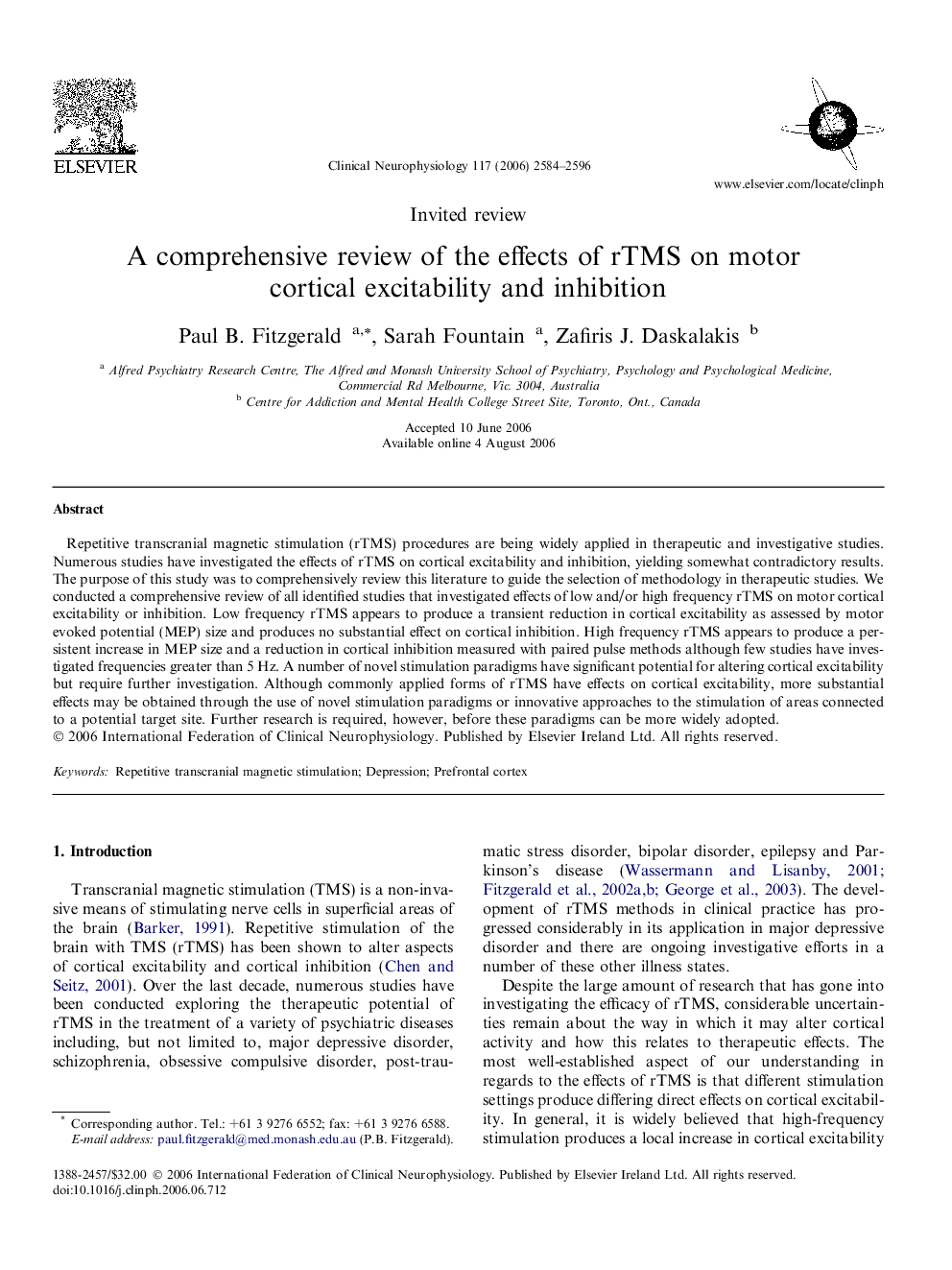| Article ID | Journal | Published Year | Pages | File Type |
|---|---|---|---|---|
| 3048326 | Clinical Neurophysiology | 2006 | 13 Pages |
Repetitive transcranial magnetic stimulation (rTMS) procedures are being widely applied in therapeutic and investigative studies. Numerous studies have investigated the effects of rTMS on cortical excitability and inhibition, yielding somewhat contradictory results. The purpose of this study was to comprehensively review this literature to guide the selection of methodology in therapeutic studies. We conducted a comprehensive review of all identified studies that investigated effects of low and/or high frequency rTMS on motor cortical excitability or inhibition. Low frequency rTMS appears to produce a transient reduction in cortical excitability as assessed by motor evoked potential (MEP) size and produces no substantial effect on cortical inhibition. High frequency rTMS appears to produce a persistent increase in MEP size and a reduction in cortical inhibition measured with paired pulse methods although few studies have investigated frequencies greater than 5 Hz. A number of novel stimulation paradigms have significant potential for altering cortical excitability but require further investigation. Although commonly applied forms of rTMS have effects on cortical excitability, more substantial effects may be obtained through the use of novel stimulation paradigms or innovative approaches to the stimulation of areas connected to a potential target site. Further research is required, however, before these paradigms can be more widely adopted.
